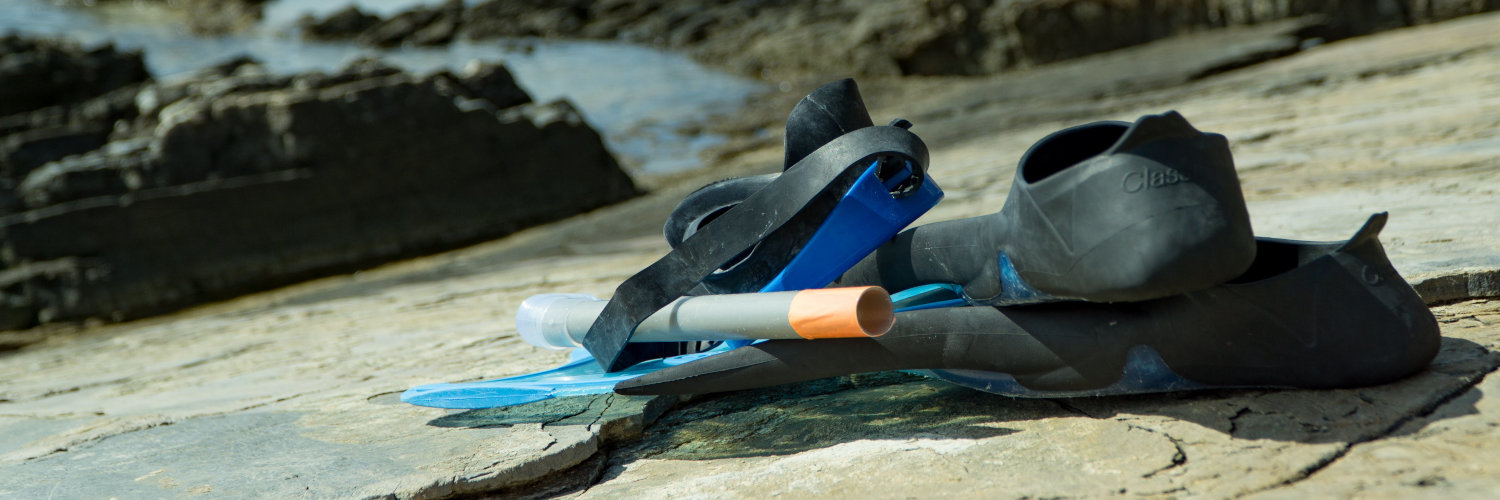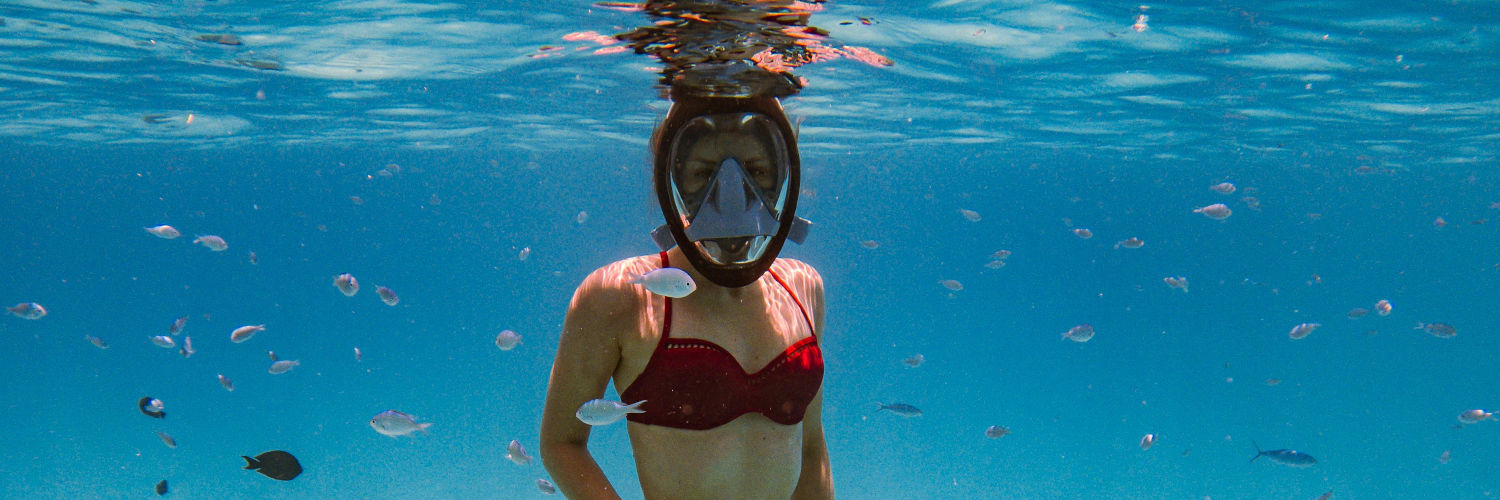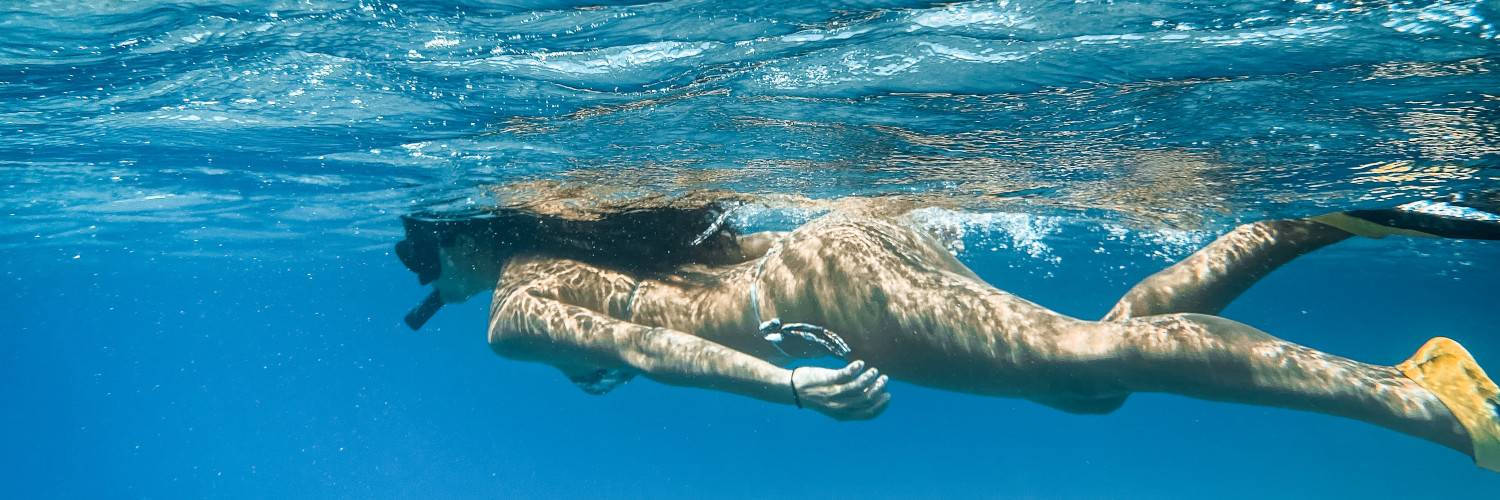Snorkeling offers beginners an accessible and fun way to explore underwater environments. It requires minimal equipment—a snorkel, a mask, and sometimes fins—and no extensive training, making it a favored activity for those who want to experience the joy of marine life without the commitment of scuba diving. To begin, one must ensure they have a comfortable, well-fitting mask and snorkel, as this is crucial for an enjoyable and safe snorkeling experience. Testing the gear in water beforehand can help to check for any leaks or discomfort.
Once equipped, new snorkelers are encouraged to practice in shallow, calm waters. This allows one to become familiar with breathing through the snorkel—a unique experience that can take some getting used to. Being relaxed and maintaining a steady, calm breathing pattern is key to a successful snorkeling session. As confidence grows, so does the opportunity to venture a little deeper, always keeping within one’s comfort zone and observing standard safety practices.
Preserving the integrity of the underwater environment is a responsibility that falls on every snorkeler. Beginners are advised to avoid touching coral or marine life, as these ecosystems are extremely fragile. By remaining buoyant and carefully managing their movements, snorkelers can minimize their impact while still enjoying the plethora of visual delights that snorkeling has to offer.
Getting Started with Snorkeling
Snorkeling is an accessible and exhilarating way to explore underwater life. It requires minimal equipment and can be enjoyed by individuals of all skill levels. This section walks beginners through the essentials, from understanding the snorkeling basics to ensuring both comfort and safety with the right gear.
Understanding the Basics of Snorkeling
Snorkeling is the practice of swimming on or through water while equipped with a diving mask, a shaped breathing tube called a snorkel, and usually fins. The mask provides a clear view underwater, the snorkel allows breathing with the face submerged, and fins enhance mobility. One should ensure that their equipment is comfortable and forms a proper seal to prevent water from entering. Beginners often start in a swimming pool or calm beach area to practice breathing through the snorkel and get accustomed to the mask before heading into open water. It is also highly recommended to familiarize oneself with local sea life and currents to enhance safety and enjoyment.
Choosing the Right Gear for Comfort and Safety
Selecting snorkeling gear that fits well is crucial, as ill-fitting equipment can detract from the experience and potentially be hazardous.
Mask: A snug seal over the nose and eyes is vital. For enhanced peripheral vision, one might opt for a mask with broader lenses. Masks with adjustable straps can help achieve a better fit. Full face snorkel masks are an alternative, offering a built-in snorkel and a wider view, but traditional snorkels provide a more unobstructed experience and are typically preferred by experienced snorkelers.
Snorkel: A snorkel with a comfortable mouthpiece and an effective purge valve makes it easier to expel water. Some models feature a dry valve at the top that helps prevent water entry when submerged.
Fins: For fins, comfort and fit are paramount. They should be snug but not so tight as to cause discomfort. Fins improve swimming efficiency and are available in full-foot or open-heel styles.
Additional Equipment: A rash guard or life jacket might be considered for sun protection or buoyancy support. Some snorkelers use a snorkel set, which includes a mask, snorkel, and fins, for a cohesive and often more economical option.
One should always try on snorkel gear before purchasing to ensure an accurate fit. Additionally, those new to snorkeling should engage with this equipment in a controlled environment, like a swimming pool, to practice techniques before venturing into open water scenarios.
Preparing for Your Snorkeling Adventure
Success in snorkeling is greatly enhanced by preliminary preparations, particularly in terms of breathing techniques and familiarizing oneself with the equipment. The aspiring snorkeler should practice breathing through a snorkel in a controlled environment and ensure their equipment is well-fitted and suitable for the conditions they will encounter.
Practicing Breathing Techniques
One of the most crucial skills a snorkeler can develop is effective breathing through the snorkel. It’s imperative to practice:
- Taking deep, slow breaths: This method helps to stay calm and conserve oxygen.
- Breathing with the snorkel: They should familiarize themselves with the sensation of drawing air through the snorkel’s tube, which can feel different compared to free breathing.
Practicing in a pool can simulate the calm waters they’ll experience in open water but with controlled conditions. New snorkelers should:
- Start by floating face down at the surface of the water, without using fins, and breathing deeply through the snorkel.
- Once comfortable, they can don fins to practice breathing while swimming at a slow pace.
Familiarizing with Snorkeling Equipment
Having the right equipment and understanding how to use it is fundamental. New snorkelers should:
- Choose the Right Mask: Select a mask that fits snugly but comfortably, ensuring it forms a proper seal to prevent water entry.
- Select a Snorkel: They can opt for a dry snorkel which prevents water from entering the top or a semi-dry snorkel, which reduces water entry.
- Fit Snorkel Fins: Fins should be comfortably tight but not too constrictive, allowing for efficient movement through the water.
Before entering open water, they should thoroughly test all equipment in a pool to ensure there are no malfunctions or discomforts.
Enhancing Your Snorkeling Skills
Improving one’s snorkeling proficiency hinges on developing core competencies in buoyancy and movement, as well as adopting efficient kicking and swimming methodologies.
Mastering Buoyancy and Movement in Water
Being adept at controlling one’s buoyancy is essential for a satisfying snorkeling experience. Beginners often benefit from using a buoyancy vest to maintain an optimal position in the water without excessive effort. The vest can be inflated to increase buoyancy or deflated to dive a bit deeper. Practicing with the vest in a controlled environment helps them to understand how much air they need for a desired level of floatation.
Effortless floating also involves the coordination of one’s arms and legs. While snorkeling, it is important to keep arms relaxed by one’s side, as excessive arm movement can lead to rapid fatigue. The legs should be doing most of the work, and here comes the value of having good technique when using flippers. Flippers extend the surface area of the feet, providing more push against the water with each kick.
Efficient Kicking and Swimming Techniques
For efficient propulsion and energy conservation, snorkelers should focus on using long, slow leg kicks. These powerful strokes are less tiring and offer better control in the water. The flutter kick —a straightforward technique involving straight, alternating leg movements— is recommended for its simplicity and effectiveness.
Another efficient technique is the frog kick, which resembles a frog’s motion in water and is realized by bending the knees and moving the lower legs outward and then back together. The advantage of this technique is that it provides more power with fewer movements, which helps to save energy during extended snorkeling sessions.
Using flippers, also called fins, increases the efficiency of these kicking methods. When selecting flippers, one should ensure they fit snugly without pinching or causing discomfort, as this could distract from the snorkeling experience and impair swimming technique. The proper use of flippers means a snorkeler can swim with less effort, conserve energy, and enjoy the underwater scenery longer.
Exploring the Underwater World
Embarking on a snorkeling adventure allows individuals to witness the vibrant marine life and coral reefs that thrive beneath the ocean’s surface. This journey requires a keen understanding of ocean conditions and adherence to safety protocols to ensure a memorable experience.
Observing Marine Life and Coral Reefs
Marine ecosystems bustle with a diverse array of species, from darting fish to the slow, majestic movements of turtles. A snorkeler can explore coral gardens, often found in tropical waters, where the kaleidoscope of colors from various corals captivates the eye. Snorkelers should:
- Maintain a respectful distance from all marine life to avoid disturbing their natural habitat.
- Use an underwater camera to capture the moment without touching corals or creatures.
Key environments for abundant marine life include shallow waters, which are often more accessible for beginners and teem with biodiversity. Here, one might encounter creatures like whale sharks in specific regions, making for an extraordinary snorkel tour encounter.
Understanding Ocean Conditions and Safety
Before slipping into the calm waters, snorkelers must assess ocean conditions such as currents, waves, and visibility. Safe snorkeling demands:
- Checking weather forecasts to identify the best times for calm waters.
- Identifying safe entry and exit points on the beach to prevent injuries.
Safety tips are imperative for a snorkeling outing. These include snorkeling with a buddy, staying hydrated, and being aware of one’s limits. Beginners should select guided snorkel tours where experienced guides can assist with understanding the nuances of the ocean’s behavior.
By arming themselves with knowledge and a deep respect for the ocean and its inhabitants, snorkelers are set for a thrilling exploration of the underwater world.
Maintaining and Caring for Your Equipment
Maintaining snorkeling gear is essential to ensure longevity and optimal performance during underwater explorations. It also ensures clarity of vision and proper functioning of breathing apparatus.
Proper Cleaning and Storage
After each snorkeling session, they should rinse their gear thoroughly with fresh water to remove salt, chlorine, and other debris. For the mask, a gentle scrub with toothpaste or a non-abrasive cleaner can remove build-up on the lens, which maintains clarity and helps prevent fogging. Snorkelers should always let their gear air-dry completely before storage to prevent mildew and bacteria growth.
Masks and snorkels should be stored in a cool, dry place out of direct sunlight, as UV rays can degrade the silicone and plastic over time. To maintain the shape and elasticity of mask straps, they should store them flat and ensure that the straps are not overly tightened when not in use.
Table for Basic Cleaning Process:
| Equipment Part | Cleaning Instructions | Frequency |
|---|---|---|
| Mask & Lens | Rinse, scrub with non-abrasive cleaner, air-dry. | After each use. |
| Snorkel | Rinse thoroughly, air-dry. | After each use. |
| Straps | Check for wear, rinse, air-dry. | Check regularly. |
Dealing with Common Gear Issues
Snorkelers may encounter issues such as fogging and leaking. To handle fogging, they can use a defogging solution on the inside of the lens before snorkeling. Some also spit in the mask and rinse it with seawater, which serves as a temporary defogger. For leaking masks, ensuring a proper fit is crucial; adjusting the straps for comfort without overtightening can prevent leaks.
Gear with purge valves requires special attention as sand and salt can cause malfunction. They should regularly inspect and clean purge valves to ensure they can clear water effectively. Similarly, snorkels with splash guards need to be checked for blockage that could hinder breathing.
List of Tips for Common Issues:
- Fogging: Apply a defog solution or use the spit method to prevent condensation.
- Leaking: Adjust straps for a snug fit; seal should comfortably conform to the face.
- Purge Valves: Inspect and clean to ensure they are free from sand and debris.
- Splash Guard: Check for obstructions that may impede airflow.





